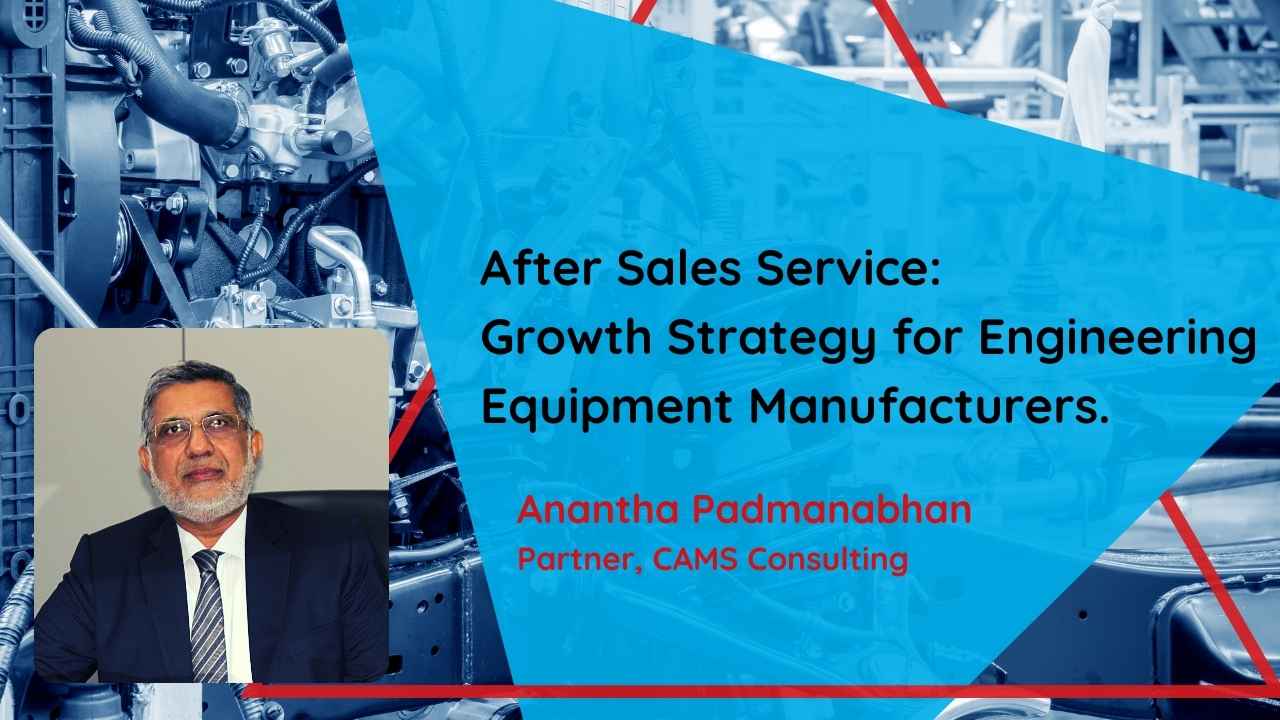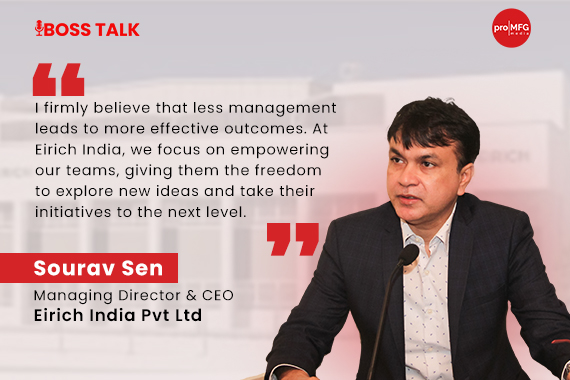After Sales Service: Growth Strategy for Engineering Equipment Manufacturers
#AfterSales #CustomerSatisfaction #Maintenance #ManufacturingAnantha Padmanabhan, Partner, CAMS Consulting; Former President – India, Middle East and Africa - Alfa Laval AB

After Sales Service is more often the “poor cousin” to manufacturing and sales in engineered equipment industries. This is a missed opportunity for creating growth and sustainability in business. Most engineered equipment is a major investment to the customer with a lifecycle ranging from 5 years to 25 years. Customers can spend up to 4 times the original value on service over the useful life of the product.
Service is not just spare parts. It encompasses a large portfolio of customer care in maintenance, upgrades, troubleshooting, performance improvement and training. Customers of today are more demanding and discerning. Manufacturers today need innovation not only in products, but also in service.
Service is not ‘just good to have’ or ‘must have’ anymore. It is evolving to be the mainstream of business with the equipment being leased out. Customers are focusing their efforts in taking care of ‘their customers’. The expectation is that equipment manufacturers work as Partners not just suppliers. There is dearth of quality leadership in the service function. It is imperative that engineering equipment manufacturers do what it takes to get their mainstream leaders to manage service function. A strong Service Strategy is critical today to create positive customer experience and profitable growth.”
A recent report by Deloitte says: “Manufacturers are increasingly turning their focus on aftermarket services, not only as a means to enhance customer satisfaction but also as a revenue-generating opportunity. In the wake of COVID-19-driven disruption, there is additional business sense in scaling aftermarket services at a time when new equipment orders are disrupted, and capital spending comes into question”.
Aftersales business(revenue) in many engineering manufacturing industries account for 20-35% of the revenue and as much as 50% of the profit. Aftermarket should be the cornerstone of any company’s growth strategy.
Service Strategy
Service strategy processes should start with a reality check and result in a clear direction for the future. It is important to understand all the forces acting in the market viz. Customers, Competition, Supply chain, Technology etc. and should also address Marketing and Sales, way to market, pricing and service infrastructure needs. A well thought out business plan is half the job done and a well charted direction motivates the team. Service strategy is the first step towards profitable growth.
Service Performance
SERVICE can be very profitable but highly resource intensive. Hence efficient deployment of resources is critical. The key resource of manpower has a very low shelf life. Service and customer knowledge is the strength of any good service provider. Knowledge management is a key element of service performance management, which ensures a positive customer experience and delivers profitable growth.
Transformation
Digitalization has the biggest impact on Service sales and delivery. Online sales, remote service, connected equipment, data analytics are some of the new demands. This change management requires visionary service leadership. As Ron Kaufman says, “Embrace the transformation and shape the future”
NEWSLETTER
TRENDING ON PRO MFG
MORE FROM THE SECTION




.jpg)




